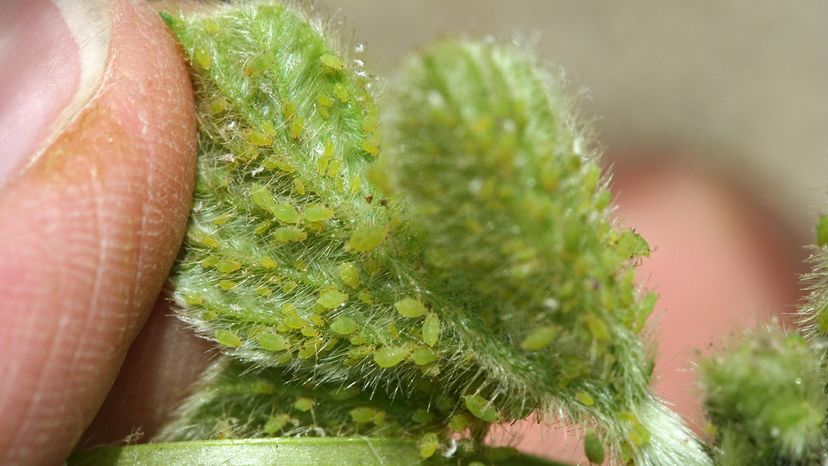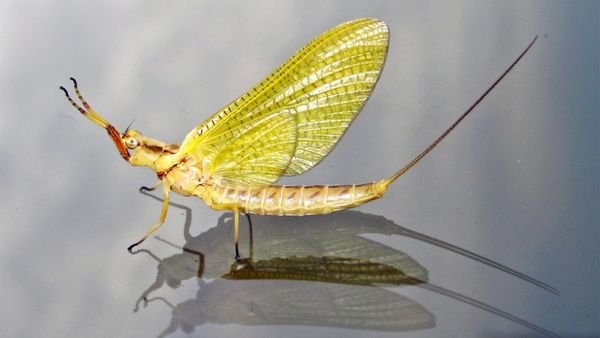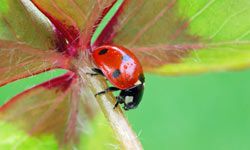
You know the old cliché about breeding like rabbits. Well, those fuzzy little carrot-munchers have nothing on aphids when it comes to reproducing.
Aphids are herbivorous pests that can multiply at an alarming rate. During the summertime, your nearest field's population of soybean aphids (Aphis glycines) could easily double in size every week, as individual adults can give birth to nine offspring per day.
Advertisement
Farmers and gardeners have ample reasons to dislike these insects. Aphids feed on sap, which they suck out of plants like vegetarian mosquitoes. Crops that aren't killed or injured by the draining process might succumb to viruses the insects transmit.
Around 5,000 aphid species are currently known to science. Distributed across the Northern Hemisphere, they range in size from 0.04 to 0.2 inches (1 to 6 millimeters). Some feed on a single plant species exclusively, others alternate between victims as the seasons change.
All aphids — large or small — are able to reproduce asexually. Through a phenomenon called parthenogenesis, their embryos can develop from unfertilized sex cells. Such "virgin births" have also been documented in anacondas and zebra sharks — to name a few.
Even though it's widespread throughout the aphid family, only a handful of species depend on this method. Most aphids practice both sexual and asexual reproduction. That flexibility speaks to the difference between the set of genes an organism has (its genotype) and its observable characteristics (its phenotype).
Consider this: Flamingos aren't pink at birth. They acquire pink feathers by eating shrimp, meaning pinkness isn't something the birds inherit from their parents. Instead, the color is a reaction to an individual flamingo's environment. So those vibrant pink complexions are part of the flamingo's phenotype, but not its genotype.
Sometimes, two members of the same species — with identical genotypes — showcase very different phenotypes. Aphid reproduction often fits the bill. Sexual and non-sexual reproduction, along with the physical traits each strategy requires, are considered separate phenotypes within the same aphid genotype.
When autumn draws near, most aphid species give birth to male and female offspring who later mate to produce fertilized eggs. These eggs must endure the cold winter season before hatching in the spring.
Now here's where it gets crazy. These newly hatched aphids don't lay eggs — or have sex — like their parents did. On the contrary, they give birth to live young through parthenogenesis. Stranger still is the fact that the unborn babies gestating inside a mother's womb start developing embryos of their own.
In other words, aphids are frequently born pregnant.
According to scientists, this process tends to repeat itself for about 10 to 30 generations before a new cohort of sexual, egg-laying aphids is born as the weather cools down.
Environmental cues determine if a gestating aphid will forgo sex or not. As the days get less sunlight and temperatures fall, mothers often respond by giving birth to babies with the right anatomy for sexual breeding.
By switching strategies, these species get the best of both worlds. Laying eggs that stay dormant for months all but guarantees that a new generation will survive the winter. Then, when the temperatures climb back up, parthenogenesis lets the emergent aphids rapidly increase their numbers. This helps, too, because the average lifespan of an aphid is only about 30 days.
Call 'em pests if you like, but you've got to respect that kind of efficiency.
Advertisement


